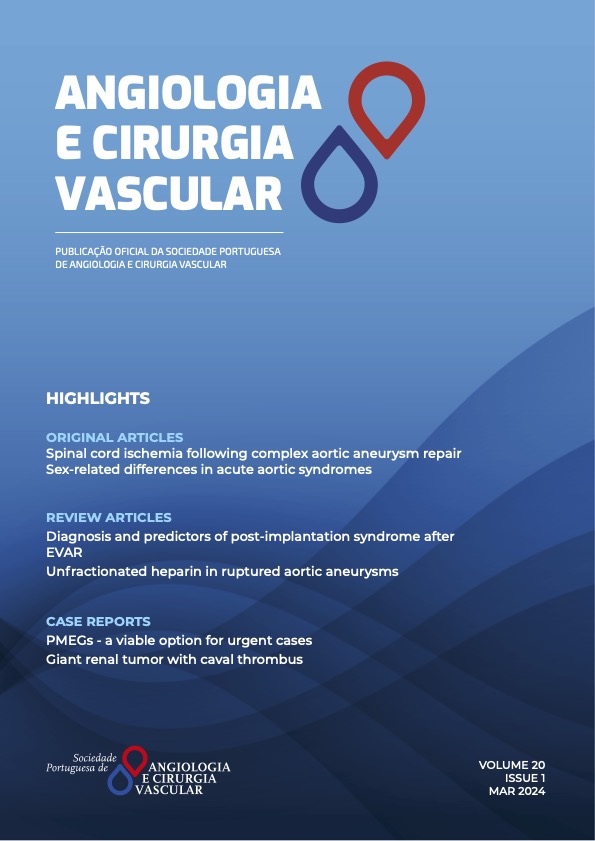Targeted therapy with sirolimus in vascular malformations – a case report
DOI:
https://doi.org/10.48750/acv.565Keywords:
Vascular malformations, high-flow malformations, mTOR inhibitors, sirolimusAbstract
BACKGROUND: Vascular malformations are a heterogeneous group of vascular development disorders with historically few treatment options. Recent studies have shown the potential benefit of mTOR inhibitors—such as sirolimus—in their treatment, particularly in low-flow malformations. However, reports on their efficacy in highflow malformations are scarce and controversial. We report the case of a patient with a combined malformation who benefited from treatment with sirolimus.REPORT: A three-year-old patient was referred to our center with a diffuse and progressive vascular malformation on her right leg, difficult to classify according to ISSVA, with disabling pain, limb deformity, and walking impairment. The initial MRI showed a diffuse malformation on the deep subcutaneous tissue without muscle or bone involvement, measuring 18cm on the largest axis. A progressive clinical worsening occurred, and after discussion with an international reference center in vascular malformations, it was classified as a diffuse vascular malformation with the involvement of contiguous structures without defined borders, with both a low and high-flow component. The high-flow component now behaves like a type IV Yakes AVM. Nevertheless, longterm therapy with sirolimus was instituted when the patient was nine years old, resulting in complete remission of pain, recovery of walking ability, and partial recovery of knee valgus. No side effects were reported. With 38 months of follow-up, the 13-year-old remains pain-free and has improved quality of life despite no imagological improvement.
CONCLUSION: Although the available evidence for mTOR inhibitors is mainly for low-flow malformations, it may be a safe and effective option for selected high-flow malformations when intervention is not possible or carries significant morbidity risks. Some studies showed a reduction in the size of the malformation with treatment; however, this was not the case in our patient, notwithstanding the clear improvement in quality of life for four years without other intervention.
Downloads
References
Sandbank S, Molho-Pessach V, Farkas A, Barzilai A, Greenberger S. Oral and topical sirolimus for vascular anomalies: A multicentre study and review. Acta Derm Venereol. 2019;99:990–6.
Ji Y, Chen S, Yang K, Zhou J, Zhang X, Jiang X, et al. A prospective multicenter study of sirolimus for complicated vascular anomalies. J Vasc Surg. 2021;74:1673-81
Freixo C, Ferreira V, Martins J, Almeida R, Caldeira D, Rosa M, et al. Efficacy and safety of sirolimus in the treatment of vascular anomalies: A systematic review. J Vasc Surg. 2020;71:318–27.
Adams DM, Trenor CC, Hammill AM, Vinks AA, Patel MN, Chaudry G, et al. Efficacy and safety of sirolimus in the treatment of complicated vascular anomalies. Pediatrics. 2016;137:e20153257
Blatt J, Stavas J, Moats-Staats B, Woosley J, Morrell DS. Treatment of childhood kaposiform hemangioendothelioma with sirolimus. Pediatr Blood Cancer. 2010;55:1396–8.
Queisser A, Seront E, Boon LM, Vikkula M. Genetic basis and therapies for vascular anomalies. Circ Res. 2021;129:155–73.
Triana P, Díez-Sebastián J, Rodriguez-Laguna L, Martinez-Glez V, Lopez-Gutierrez JC. Sirolimus early treatment in vascular anomalies leads to a better response. J Vasc Anom. 2023;4:e065
Durán‐Romero AJ, Hernández‐Rodríguez JC, Ortiz‐Álvarez J, Domínguez‐ Cruz JJ, Monserrat‐García MT, Conejo‐Mir Sánchez J, et al. Efficacy and safety of oral sirolimus for high‐flow vascular malformations in real clinical practice. Clin Exp Dermatol 2021;47:57–62.









